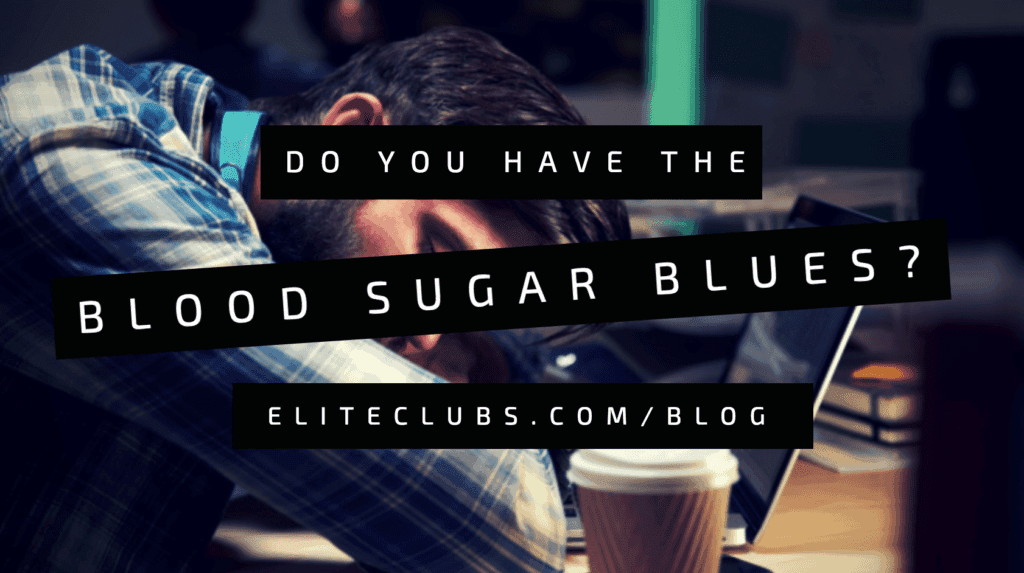
A well-known 1950’s actress by the name of Gloria Swanson contributed to a book titled “Sugar Blues” written by William Dufty. The opening chapter depicts Swanson’s struggle with sugar and how she would experience a “crash” within 20-30 minutes of consuming it. She described how she’d experience a tremendous drop in her blood sugar, which she coined as the “Sugar Blues.” Later her doctor figured out that Swanson regularly consumed large doses of sugary type foods, including soda, before she went on stage.
Many foods contain a large amount of sugar, including cookies, cakes with frosting, candy bars, pie syrup, molasses, maple syrup, and all regular carbonated sodas. We know these foods are not good for us, but often become “addicted” to the taste and the quick surge of energy they provide.
Regular table sugar can be broken down quickly, within minutes, and it is available in the blood stream within 10 minutes. Of course, as Swanson found out, the energy it produces does not last any longer than 30-45 minutes. Let’s take a look and see what is really going on in the body to create such an up and down feeling. And is giving up soda altogether the right decision?
So, what are the steps in blood sugar breakdown that will affect you for hours to come?
- Sugary foods, especially those made from simple table sugar, will taste great in your mouth and wake up your taste buds quickly. In a can of soda there are 10-teaspoons of sugar in just 12-ounces of liquid. But, you may not notice it as much as you could because of the phosphoric acid as an ingredient. It will mask the sugary taste. Not surprising, if you are used to these foods, this becomes something you become accustomed to. It’s just the way food is. Sweet!
- Liquid table sugar passes quickly through your stomach and intestines. More solid foods contain fiber, protein, and fats take longer to break down and absorb because of their more complex ingredients. Simple sugars are in and out of the gut quickly. Most simple sugars are either sucrose or high fructose corn syrup, which are broken down and in the bloodstream within minutes.
- Getting a feeling of a sugar “high” is next. And, you will actually feel good. Your blood sugar spikes rapidly and is as high as it is going to be, or within 30-45 minutes. Incidentally, the caffeine in soda products goes to your brain, which will keep you from feeling any possible fatigue. End of story? No!
- Next, your body will feel the sugar in the system, and will respond by adding large amounts of insulin to cover the sugar. It’s job is to move the sugar from the bloodstream into the cell where it is used up quickly for energy. The insulin is secreted by the pancreas. This process happens within an hour and the blood sugar crashes from the high levels of insulin. You start to feel tired immediately. Many people will report that they feel like eating more sugar at this point because they are feeling the crash. They feel that they are only responding to a “normal situation”; maybe even real hunger. But not the case. It is really more of a response to the up and down of the blood sugar all of which is happening in the same one hour!
How to regulate your blood sugar:
Most people have some form of sugar every day. It is hard to avoid. The natural sugar in foods such as fruit, vegetables, and starches, as bread, are not create the same effects. They operate somewhat slower. So, what are you to do?!
Find the sources of real sugar in your diet. Figure out how much you are having on a daily basis. Then, decide how much, if any, you really need to sustain your daily energy levels. Most people want to get as much as they can out of the foods they eat. Falling off too soon after breakfast or lunch, can be a real breakdown during a workday or during a workout. This decision is therefore important and will have a lot to do with your success with energy, fitness, and sustainability of your daily calories. Just a different way of looking at the “not always talked about” non-foods in our daily diets.
Written by Rita Larsen, RDN, CD; Elite Sports Clubs Nutrition Educator & Diet Counselor
Rita is certified in Positive Psychology, University of Penn; has a BS in Dietetics from Kansas State University; and an Internship and Masters at the Indiana University Medical Center.
Schedule a Nutrition Consultation